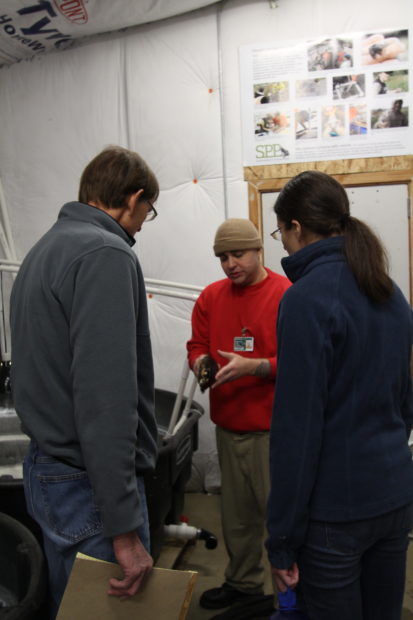Text and photos by SPP Prairie Conservation Nursery Coordinator Alexandra James

Harvest Pizzas line up.
The Farm-to-Table concept is making headway in Washington state prisons. In general, the concept promotes the use of local food in restaurants, schools, and community centers adjacent to regional farms. This growing season at Washington Corrections Center, SPP’s Conservation Nursery crew tended the vegetable plots adjacent to their violet beds; the crew sowed, grew, and harvested hundreds of pounds of food to support the local food banks, making farm-to-table possible for people with the greatest need.
SPP hosted a pizza party for the crew in celebration of their efforts. Pizza toppings and salad fixings were harvested from vegetables growing in the horticulture garden. The crew worked together to create colorful pizzas to share amongst the SPP nursery crew and DOC staff.

Colorful Pizza topped with edible flowers.
The vegetable garden served as an educational forum, where crew members learned about organic agriculture and the implications of food systems in the United States. Hard work and long hours were a common attribute needed to sustain the gardens. Along with the produce from the horticulture program, WCC produced over 24,414 lbs. under the leadership of Benri Deanon, Grounds Supervisor. The WCC staff and crew members did an incredible job working together to support their local community outside of the prison walls.
The celebration not only marked an important milestone for the gardening season; it was also a joyful transition for SPP staff in the Conservation Nursery. Joey Burgess, SPP coordinator for two years, is moving on to be a horticulture and literacy instructor at WCC. He will be working for Centralia College and will bring his dedication and expertise full time to incarcerated students.
Alexandra James will step in as the new SPP coordinator at WCC. Alex joins the SPP team with experience in environmental education and is looking forward to sharing her knowledge and passion for nature with the WCC crew. She hopes to enhance her understanding of environmental education by engaging, empowering, and learning from our incarceration community.

Salad with kale, collard greens, lettuce, edible flowers, chives, and tomatoes.







































